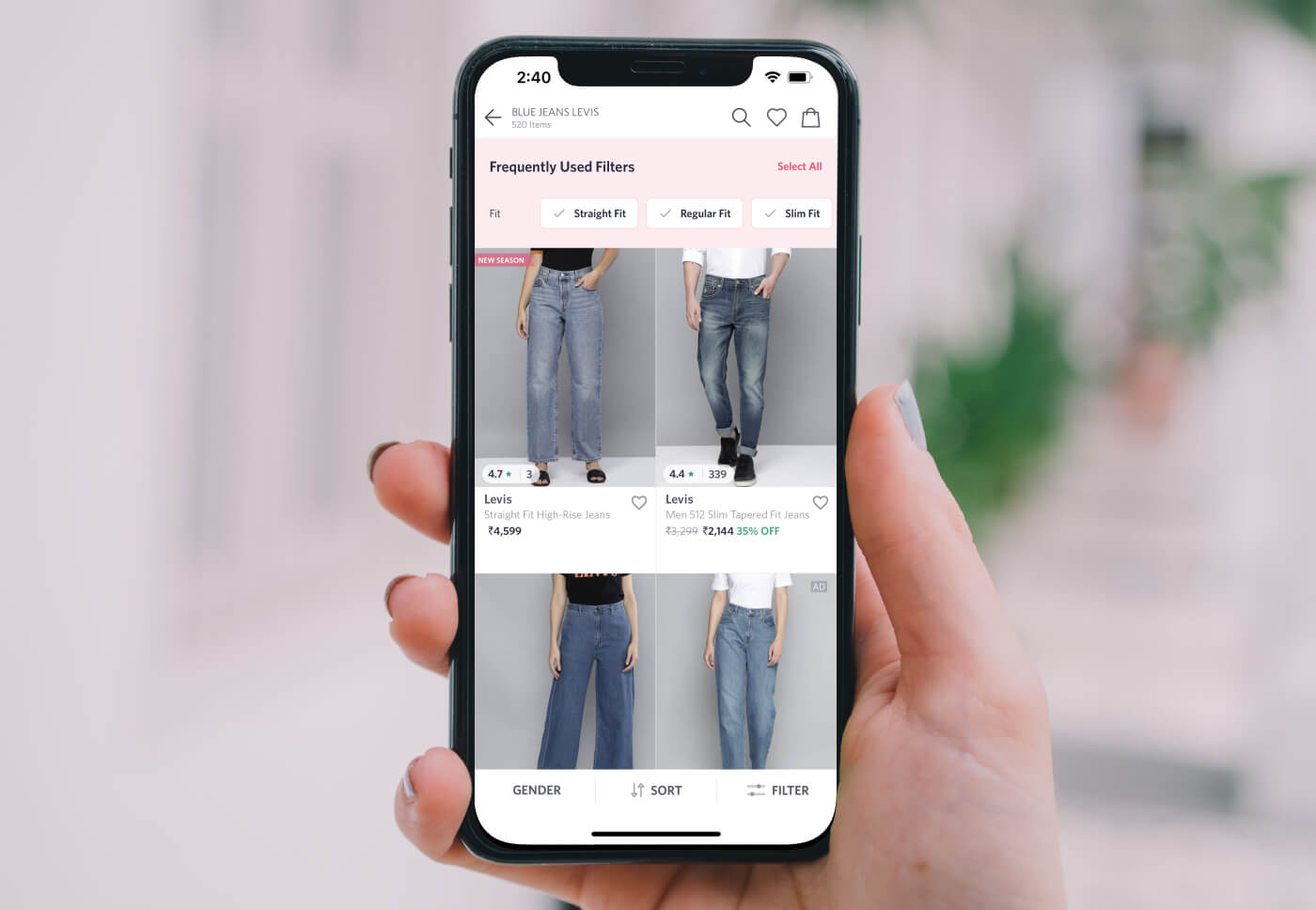
The App Store or the Play Store boasts about 5.679 million apps, whose main objective is to see users download them. However, to do so, there are multiple requirements that apps need to satisfy.
One of those requirements begins with mobile app design. However, because apps lose about 77% of their users in the first three days, the importance of designing a mobile app and other requirements cannot be further expressed.
Beginning with the user interface, there’s a lot that needs to be furnished.
How has mobile app UI design changed?
Mobile app UI designing, be it app user interface design or other specifics, there’s a lot that has changed with time. These changes result from trends, and there are plenty of them in 2023.
Hence, here are the top trends in mobile app UI design for 2023.
The power of Artificial Intelligence (AI)
AI has penetrated through various design stages and is now firmly established. With the power of AI, designers can now look into developing adaptable interfaces that go a long way in meeting customer preferences.
Thanks to AI, designers now have an extra tool for,
- Generating user engagement
- Building seamless navigation
- Conducting mobile app market research
AI’s robust potential has also suggested that its market could grow to $282 billion by 2027. This refers to a point in the future where UI/UX designers could view AI as a companion.
Combining Augmented Reality (AR) and Virtual Reality (VR)
With smartphones being the perfect medium to access several things, who’s not to say that top-notch AR effects cannot be accessed? As a top trend in 2023, users are expected to engage a lot more with digital content thanks to the impact of AR.
Take 3D as a top example. With its inclusion, users can view any product in detail before purchasing it. Such examples hint at a future where we further explore an immersive digital environment with AR and VR being at the center and UX designs for apps being critical.
Mobile-first designs
A new trend enables designers to consider designing for mobiles first and then move over to desktops and other devices. With billions of smartphone users worldwide, the need to cater to them and find a top mobile UI/UX agency grows further.
While the user experience needs to be seamless across all devices, smartphones grab the most attention; therefore, mobile UX becomes the talk of the town.
Multi-path navigation
There’s a new type of navigation in town, and it is classified as a method aimed at simplifying flows and interactions that are otherwise considered complex based on the kind of app.
Multi-path navigation incorporates,
- Vertically scrolling displays and
- Horizontal sliders
Its benefits are also many in number, with different navigation styles enhancing the app’s visual appeal and increasing its usability. Users are also more likely to use the app for more extended periods, increasing customer retention.
Personalized user experiences
Personalized user experiences aren’t a new thing. However, they are regarded as a trend and included in design guidelines, thanks to the benefits that they can offer. In addition, with companies collecting user data, they expect this information to generate personalized experiences.
For the same purpose, you can witness a top UI/UX design agency create user personas to further develop UX designs and come out with a favorable outcome. In modern times, AI also chips in and combines the goodness of customization and personalization.
Top streaming platforms, like Netflix, use AI to showcase content similar to their users’ interests and likes. This only goes to prove that more personalized user experiences await us shortly.
How does a well-designed Mobile App UI help your business?
Every business aims to gain returns, and the same can be said for designing mobile apps. Businesses benefit from a well-designed mobile app; the following points convey those benefits.
Helps in increasing ROI (Return on Investment)
Mobile UX is closely connected with Key Performance Indicators (KPIs), which are known to impact ROI significantly. Therefore, a well-designed and enhanced UX not only helps in customer retention but also customer loyalty.
It plays a vital role in conversions, placing the onus on UI/UX designers to ensure everything goes as planned. If your business has the backing of a well-structured and simplified design, you can expect ROI to be in your business’s favor.
Helps in brand building
There are approximately 6.84 billion smartphone users in the world, leaving you with more than enough reasons to build a mobile app. With a broad audience, a business with a mobile app is also an appealing aspect of brand building.
By incorporating top design practices or by learning about how to improve mobile app user experience (UX), you can look to build a recognizable brand whose message can be spread across the world through an app.
Better rankings
Apps with the best user experience are known to have better ranks and a higher chance of being downloaded. So, from content to design, app UX is crucial in helping businesses rank their apps higher.
When the design is engaging and the features helpful, customers are more likely to meet their requirements by downloading your app.
Be ahead of the competition
Top industries and the companies and businesses running them have apps, which is now the rule of the land. So if your business does not have an app, you will fall behind and lose the race.
Your target group will go elsewhere to meet their needs. On top of it all, if your app does not have a top UI, you are bound to be disregarded by the competition.
What are some of the tips for developing a good Mobile UI?
Developing a good mobile UI falls on specifics. While requirements must be met, a few tips, especially design tips, can help you get things done.
Conducting user research
User interfaces need to be simple and easy to understand. A cluttered interface will always cause a hazard and prevent users from getting what they want. The idea is to keep it simple and conduct user research to understand their needs and requirements.
First, you need to understand whether your target group needs a mobile app or a mobile website. And once you have the answer, you need to move on to the next part of the project.
If a mobile app is the way to go forward, then you need to formulate your mobile app design based on data extracted from critical user research.
Being consistent
Maintaining consistency in colors, typography, and other design elements helps you create a unique visual identity for your app. Along with consistency, you also need to inject a contextual design that stays relevant to the type of product or service that you are promoting.
When consistency and contextual design are followed, you get an app that stands on top for its intended use.
Following intuitive navigation and usability testing
Being able to access the features and functions that you need without having to go and search for them is a requirement rather than a benefit. It helps your users understand your application and heightens the value that it generates.
Intuitive navigation is a must-have for mobile UX and a prime design tip you must follow. Towards the end, you also need to conduct a non-functional test for usability to understand the effectiveness of your app.
With usability testing, you can deduct flaws and quickly rectify errors you may not have seen during development.
Effective use of push notifications
Anything in abundance can cause a problem; the same can be said about push notifications. These notifications are meant to provide information and generate a reaction. Therefore, they shouldn’t be classified as a nuisance by the user.
Striking a balance between informing the user and understanding their preferences is the efficient way to utilize push notifications. Messages you provide for the user must be engaging, valuable and personalized.
Creating a single-screen experience
While smartphones offer split-screen features, users still need to adapt. The information generated through split screens may not be appealing to all users, and decision-makers are returning to developing the single-screen experience.
With the single-screen method, you can effectively place information and navigate your users to the relevant spaces. Applications that provide financial services and more are better used for the single-screen method due to the heavy load of information that must be presented.
Utilizing video content
The use of video content is projected to rise to 80% by 2028, making it an essential requirement for your app. However, its usage, as a trend for mobile UX, is driven by the portrait mode rather than other forms.
Considering how users interact with videos, it is essential to present them in a manner that drives home the point of your video. For this exact purpose, you require the expert services of a top video production agency.
Takeaway
Mobile App UI is a field of interest that businesses constantly target. Since apps are a significant requirement, the tools to complete this requirement are what you need to be looking at.
From building a compelling UI to ensuring that the intricacies of design are maintained, a mobile app needs everything it requires to succeed.







